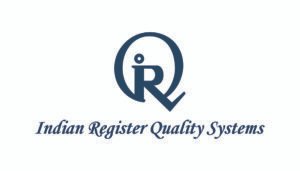How An Integrated Management System Can Benefit Organizations
November 19, 2021 2024-12-12 11:53How An Integrated Management System Can Benefit Organizations

How An Integrated Management System Can Benefit Organizations
An Overview by Team IRQS - ISO Certification Body
ToggleIn today’s world, most organizations use management systems to set up policies and procedures that can help in achieving their business objectives. A management system is the structure of processes and procedures used to make certain that an organization can manage all tasks required to achieve its objectives.
Companies or businesses will have management systems that support quality, health and safety, data privacy, and the environment. These management systems are often isolated from one another in the organization. For example, a quality management system might be unconnected from the health and safety management system.
While each management system works individually, it leads to duplication of effort, which in turn leads to squandered time and money. Furthermore, with the dynamic economic situation, the increasing complexity of the global marketplace, and the increasing need to deal with several compliance frameworks simultaneously, organizations have started to look out for a solution to support all their management systems under one roof.
This has led organizations to recognize the value of integrated management systems that combines two or more management systems into a single framework.
What are integrated management systems?
An integrated management system is a single system where all the management systems of an organization work together towards a single objective – to improve the performance of the entire organization. It combines all related components of an organization into a single system so that similar processes are seamlessly managed and executed without duplication and with cost-efficiency.
For example, Quality, Environmental, and Safety management systems are often combined and managed as an IMS. Typically ISO 9001, ISO 14001, and ISO 45001 are integrated into one system but it is not limited to just these standards. These systems are linked together so that similar processes are consistently managed and executed with replication.
When planning for an integrated management system, most organizations usually begin with the requirements for ISO 9001:2015 for quality management systems and then add others as required, such as ISO 14001:2015 for the environment, ISO 45001:2018 for health and safety, and ISO 27001:2013 for data security. The benefits of this approach include better conformity with legal essentials, higher customer satisfaction, and better information made available for executive decision-making. This, in turn, gives more money by improving profit.
The shared structure of integrated management systems can help companies attain their overall objectives besides the objectives of the individual management systems. This can save the organization a great amount of time and resources, resulting in an improved profit.
Benefits of the IMS
Knowing about the benefits of the IMS is a sound starting point to assess if the time has come for the implementation of the integrated management systems.
- Enhances performance
Integrated management systems are said to have a positive impact on individual management system elements. This leads to improvements in quality, safety, risk, and productivity. The improvement in the quality of the products or services will have a direct positive impact on organizational performance.
- Establishes consistency
With the implementation of integrated management systems, your organization can establish better consistency of the management systems. When there is consistency, the system will become less complex. Consistency will also help in achieving the common set of objectives that are important to the organization.
- Improves cost-efficiency
Integrated management systems also are more cost-effective in the long run. The organization can save costs in implementation, training, and auditing. An organization need not pay for different system audits separately to meet the requirements of each standard. An integrated audit can evaluate the requirements that are common for each standard altogether.
When all the standards are integrated, it can help reduce the time taken to do various activities, thus eliminating the amount of time interrupted, which in turn enhances cost-efficiency.
- Optimizes processes and resources
When viewing standard requirements, do not consider them an added load or task to the organization, rather remember that they are a way to implement expectations from customers, interested parties, and the organization, and create a smooth and effective process. Resources can be optimized and they can start focusing on process implementation instead of taking care of the system or standard maintenance. This can add value to the organization.
- Reduces maintenance
Implementing an integrated management system ensures that you are upholding the management system standard requirements. You can also have a check over the requirements and processes, allowing the organization to concentrate on improvements rather than maintaining different systems.
- Helps in decision making
An integrated management system is an effective approach to simplify the work, avoid conflicts and reduce duplication of documents. Eliminating redundancy and avoiding conflicts within the organization allows for a more complete view of the functional needs and performance. This integrated approach also allows the organization to examine functional and department hurdles and thereby improve communication and decision making.
The Bottom Line
To survive in global competition and today’s markets, you need to look at every aspect of the business processes. A properly integrated management system will help companies remain competitive while coping with many other factors that could be crucial for the company’s strategy.
Looking to integrate your management systems?
IRQS has the expertise to help give you the skills to integrate management systems in your organization that will enable you to enhance performance and operate with greater cost efficiency.
Recent Posts
Follow us on
Categories
ISO Certification Body in India | Trusted Certification Experts in India
IRQS is a leading ISO certification body with 25+ years of experience, offering ISO certification and training services to over 5,000 clients worldwide.
ISO 9001 Certification Body - Best Service & Lowest Price
Apply for ISO Certification in India. IRQS is one of the leading Certification bodies that offers internationally recognized ISO certification
Cities we cater for ISO Certifications in India: iso certification in india, iso certification body, iso certification in Mumbai, iso certification in Bangalore, iso certification in Ahmedabad, iso certification in Bhavnagar, iso certification in Kolkata, iso certification in Chennai, iso certification in Delhi, iso certification in Goa, iso certification in Hyderabad, iso certification in Kandla, iso certification in Kochi, iso certification in Pune, iso certification in Bhopal, iso certification in Vadodara, iso certification in Tiruchirapalli, iso certification in Visakhapatnam, iso certification in Port Blair, iso certification in PARADIP, iso certification in Surat, iso certification in JAMNAGAR, iso certification in KAKINADA, iso certification in COIMBATORE, iso certification in TRICHY
By Certification: ISO 9001 certification, Quality Management System (QMS) certification, ISO 14001 certification, Environmental Management Systems (EMS) certification, ISO 45001 certification, Occupational Health and Safety Management Systems (OHSMS) certification, ISO 50001 certification, Energy Management Systems (EnMS) certification, ISO 27001 certification, Information Security Management Systems (ISMS) certification, ISO 27701 certification, Privacy Information Management System certification, FAMI-QS Certification, Feed Additives and Pre-mixtures Quality System Certification, BRCGS certification, Brand Reputation through Compliance Global Standards, IATF 16949 certification, Automotive Quality Management Systems Certification, ISO 22000 certification, Food Safety Management Systems (FSMS) certification, FSSC 22000 Certification, Food Safety System Certification (FSSC) certification, Ayush Certification, Ayush Mark Certification, fssai third party audit, food safety auditing, ISO 21001 Certification, Educational Organization Management System (EOMS) certification, ISO 28000 Certification, Security Management System for Supply Chain (SCSMS) certification, ISO 13485 Certification, Medical Device Quality Management System Certification, SOC 1 Report, SOC 2 Report, IMS certification, integrated management system certification, GDPR Certification, general data protection regulation certification, SOC 2 Certification, SOC 2 Compliance, service organization controls certification, VAPT certification, Vulnerability Assessment and Penetration Testing Certification, ISO 22301 Certification, bcms certification, Business Continuity Management Systems certification
By Sector: ISO Certification for Engineering & Manufacturing, ISO Certification for Automotive, ISO Certification for Health Care, ISO Certification for Food & Beverages, ISO Certification for IT & ITES, ISO Certification for Marine, ISO Certification for Education, ISO Certification for Oil & Gas, ISO Certification for Construction, ISO Certification for Energy, ISO Certification for Retails, ISO Certification for Defence, ISO Certification for Medical Device, ISO Certification for Mining, ISO Certification for Financial Services
By Training: ISO 9001 training, ISO 9001 Lead Auditor Training, QMS training, ISO 14001 training, ISO 14001 Lead Auditor Training, ISO 45001 Training, ISO 45001 Lead Auditor Training, ISO 27001 Training, ISO 27001 Lead Auditor Training, ISO 22301 training, ISO 22301 Lead Auditor training, ISO 9001 Internal Auditor, ISO 14001 Internal Auditor, ISO 45001 Internal Auditor, Integrated Management Systems (IMS) Training, IATF Internal Auditor Training, FSSC 22000 Internal Auditor Training, ISO 22000 Internal Auditor Training, ISO 50001 Internal Auditor Training, ISO 21001 Internal Auditor Training, ISO 13485 Internal Auditor Training, ISO 27001 Internal Auditor Training, ISO 28000 Internal Auditor Training, IRCA accredited training
By Sustainability: esg services, esg solutions, esg certification courses, sustainability certification courses, life cycle assessment certification, sustainable development certificate, life cycle analysis certification, sustainability certification program, sustainability verification & Validation, sustainability report assurance, sustainability assurance, sustainability reporting verification & Validation, sustainable claim verification & Validation, green house emissions & assurance, pas 2050 certification, pas 2050 verification, carbon footprint of products, carbon footprint solutions, iso 14067 certification, iso 14067 verification & Validation, iso 14064 certification, iso 14064 verification & Validation, carbon footprint verification, ghg verification, iso 14064 certification course, iso 14064 lead Implementor training, iso greenhouse gas standards, pas 2060 certification, pas 2060 carbon neutral certification, pas 2060 verification, carbon neutrality standard & certification, carbon neutral verification, carbon footprint management, carbon emission management, pas 2080 certification, carbon management in infrastructure, pas 2080 verification, greenhouse gas emissions management, iso 26000 training, social responsibility management system, csr management system, social responsibility lead implementor, life cycle assessment course, life cycle assessment certification, lca course, life cycle analysis course, life cycle assessment training, iso 14040 training, iso 14044 training, life cycle assessment training program, iso 14064 certification, iso 14064 training, iso 14064 certification course, iso 14064 lead auditor training, iso 14067 training, iso 14067 certification, product carbon footprint lead implementor, ghg accounting, green house gas accounting, lead verifier certification program, iso ghg accounting, sustainability reporting, esg reporting, gri standards, csr reporting, gri reporting standards, global reporting initiative standards, gri sustainability reporting, sustainability reporting in line with gri standards, business responsibility and sustainability reporting, brsr training, iso 20400 training, sustainable procurement awareness, sustainable procurement, iso 27001 lead auditor, iso 27001 lead implementer, iso 27001 implementer, water footprint management, iso 14046 training, water footprint verification, carbon border adjustment mechanism, cbam regulation, cbam training, AA1000 assurance, reasonable level assurance, limited level assurance, ISAE3000 Assurance, ISAE3410 Assurance, LCA Critical review, CDP verification and validation, BRSR assurance, Zero waste to landfill certificate, responsible plastic management, Scope 1, 2, and 3, Upstream and downstream waste management, Marine Stewardship Council responsible fishing standard
Other Services: Testing Services, HKC and EU Certification, Ship Recycling Regulations, Ship Recycling Training, Coal Inspection Testing, Coal Sampling and Testing, green audit, Environmental Audit, Cyber Security, ResponsibleSteel
List of Top ISO Certification Companies in India
List of iso certification body in india, Top 10 ISO certification bodies in India, ISO certification body list, List of ISO 9001 Certification bodies in India, Who can issue ISO certification in India, ISO certification list, ISO certification for individuals, ISO certification full form





